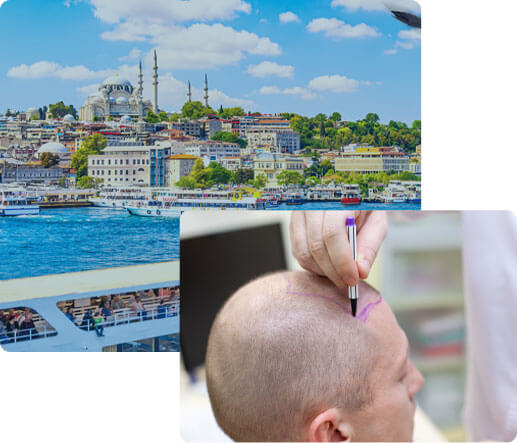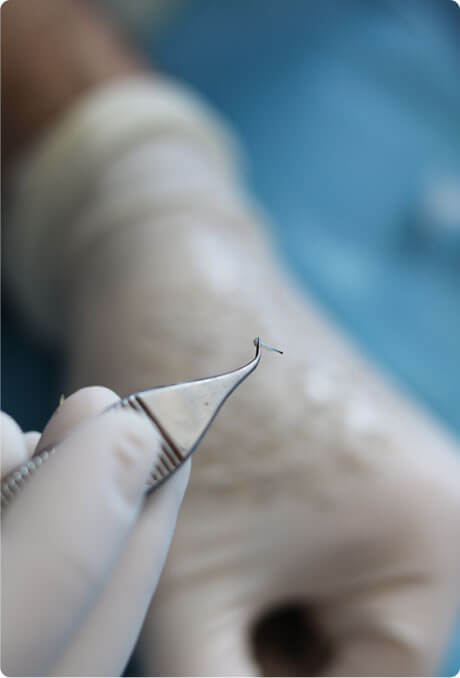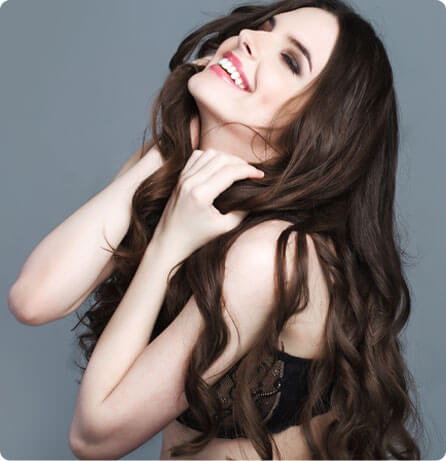The procedure can last between 6 and 10 hours, depending on the extent of the alopecia. Other factors influence its duration, such as the quality and quantity of hair to be donated, where it is, how it will be arranged and the experience of the person performing the hair transplant.
Free express quote


The hair transplantation performed in Turkey allows for the treatment of the baldness by the best surgeons. During a medical stay all-inclusive, Medespoir offers to all people who wish to have a dense hair the best techniques of hair transplant.
the importance of the aestheticaspect, it is necessary that those who decide to undergo the surgery of hair transplantation in Turkey can count on the experience and talent of a good doctor. In addition, the doctor must know how to draw the hairline so that the result is natural and covers the alopecia.
Free express quote

What are the hair transplant techniques?
The techniques used to treat baldness are strip hair transplantation, known as FUT hair transplantation, and the hair transplant by FUE.
The two surgical methods of hair transplantation (FUT and FUE) are both decisive and very effective in the treatment of androgenetic alopecia. Although they have the same objective, they differ considerably in the way they are used to they are executed and, in this context, we will identify the characteristics and particularities of each.
Regarding the FUE method, there are different treatments that differ according to the collection and grafting tool follicular units. The methods used for a transplant of hair in Turkey are: micro FUE, DHI, Choi pen ...
What are the hair transplant techniques?
What differentiates the DHI method from the FUE method is that in the HID implantation method, the surgeon creates the site recipient and implants the follicular unit simultaneously.
That is to say, the extraction and implantation are carried out during in a single step. The doctor implants the hair follicles that he or she extracted from the occipital area directly into the recipient sites of the bald area without making incisions to prepare the channels.
The implanter/the Choi pen is an instrument which gave its name to the above mentioned method. This The implanter has a very thin cylindrical shape and a pointed tip, that looks like a pen, easily manipulated.
The tip of the Choi implanter has a hollow needle that allows the collection and removal of a follicular unit directly from the back of the skull. It is directly connected to a small piston at the opposite end of the pen. During the grafting process, the doctor specialized in hair transplantation in Turkey exercises a pressure on this piston. This will help to introduce well the needle into the scalp and release the unit follicular.
How to choose between FUT and FUE hair transplant?
The answer is certainly in the preliminary phase, that is to say the specialized consultation. In fact, the examination preliminary is fundamental, whatever the type of technique that will be used.
The specialized consultation for a hair transplant in Turkey is important, as it allows to assess the general, dermatological and psychological state of health of the patient. The surgeon must also assess factors such as hair quality and density, scalp type, and pattern of baldness. In addition, he must perform detailed examinations and advise the patient on specific treatments to increase the success rate of hair transplantation.
Whether the FUE or FUT technique is chosen, prior examinations are always necessary, and a certain number of routine preoperative tests are prescribed by the Medespoir team: blood count, transaminases, hepatitis B and C markers and of HIV, coagulation tests, ECG.
To give a clearer idea of the two methods, the two techniques are compared below:
| FUT Hair Transplantation (Strip Extraction) | FUE Hair Transplant (Follicular Unit Extraction) | |
|---|---|---|
| Execution method and collection method | It involves a surgical cut, that is, the extraction of a strip of skin from the nape of the neck to collect the follicular units. | It allows the excision of small follicular units (1 to 4 hairs) using a minimally invasive punch, without resorting to exporting the scalp. |
| Anaesthesia | Local anesthesia | Local anesthesia |
| Follicular unit extraction area | Occipital area, no alternate site | Occipital and temporo-parietal area, as well as ectopic sites, for example, beard and chest. |
| The follicular units | Extracted without skin strip selection. | They are extracted directly from the donor area, selected and then grafted. |
| Follicular unit viability and survival | Stronger units. After their removal, they are placed in a specific solution indicated by the surgeon; then they are placed in refrigerated containers to recreate the physiological environment of the hair. | More fragile units. After collection, they are placed in a specific culture medium (at the discretion of the surgeon); placed in refrigerated containers, designed to recreate the physiological environment of the hair. |
| Execution speed | Faster in pellet removal but slower in follicular unit splitting. | Slower. Each follicular unit is extracted individually |
| Graft damage | Minimal. The grafts are taken more easily from the scalp strip. | it depends on the specialist. Unqualified personnel can |
| Scars | Yes, a linear scar of varying length and width. | Imperceptible. |
| Stitches | Yes, removed in 2 weeks | None |
| Post-operative pain | Pain medication usually needs to be taken for 1-2 days | May require pain medication |
| Healing of the donor area | Slower healing, around 1-2 months | Fast healing, about 2 weeks |
| Healing of the receiving area | About 15 days | About 15 days |
| Resumption of usual activities | 1 to 2 weeks | 2 to 5 days |
| Resumption of sports activities | 1 to 2 months | Maximum after 30 days |
| End result | Less natural result. The hairline may include | Natural result |

What is the duration of hair transplant treatment in Turkey?


Is hair transplantation in Turkey a painful procedure?


Hair transplantation itself is not a painful procedure, as it is performed under local anesthesia.
The hair transplant specialists in Turkey partners of Medespoir offer the possibility of painless anesthesia to all patients. It is an outpatient procedure. Once the procedure is complete, the patient can go home without needing to be placed under observation.
Perhaps the most important part is the recovery, which is usually painful and tricky when a hair transplant is performed using the FUT technique and not the FUE method.
Hair Transplant Design and Planning in Turkey: What do you need to know?


Perhaps the most important part of hair transplantation is not just the implantation of the grafts, but the design, the creation of the frontal hairline.
The experience of the doctor specialized in hair transplantation and his aesthetic point of view are the most important aspects to plan the intervention correctly.
The cosmetic surgeon plans the details of the operation, such as the optimal number of grafts to be taken, their density and the way to transplant them.
How to plan hair transplant in Turkey?
- Calculation of the optimal number of grafts in a single operation, depending on the patient's needs.
- Study of the donor area.
- Design and elaboration of the frontal line for a natural result.
- Calculation of the density of the micrografts to be implanted.
The drawing and the realization of the frontal line
The drawing of the hairline is one of the most important points to achieve a result that looks natural.
Photos of patients taken before hair loss can be very helpful in redefining the forehead line as before.
Points to consider when designing the hairline: (for severe cases)
There are differences between the skin where the hair grows and the skin on the forehead in terms of color and thickness.
While the forehead skin moves when you move your eyebrows, the forehead line does not move.
The line of the frontal implant can be designed in triangle, oval or straight, according to the request of the patient and the criteria of the plastic surgeon.
Planning the optimal number of grafts depends on:
- The extent of the donor area.
- The density of hair follicles in the donor area.
- The size of the beneficiary area.
- Loss or total reduction of hair in the recipient area.
An adult male has approximately 100,000 hair follicles (between 80,000 and 120,000). The total area covered with hair averages 500 square centimeters and there are 200 hair follicles in each square centimeter. If the hair follicles are long and thick, the human eye can perceive the hair density at 30% and 100%. This therefore means that for a natural result, approximately 60 to 80 hair follicles are sufficient for 1 cm².
For an area of total hair loss, 25-30 micrografts are enough to achieve the desired density of 1 cm square. Even in the case of significant baldness (types 6 and 7), the doctor can take an average of 6,000 grafts in 2 or 3 sessions. With this method, we manage to get enough of it to obtain a natural result.
For severe cases, where the donor area is limited, the recipient area may be reduced in order to obtain a denser and more natural appearance. The anterior line of the implant can then be placed a little higher than usual.
The anterior line of the implant should never be artificially designed.
For a natural look, the front hairline should have a good density of grafts. The grafts containing 1 strand of hair are reserved for the front line, as this gives a more natural look to the result.
